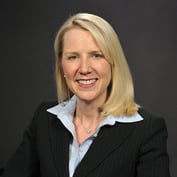The average account balance for U.S. workers consistently maintaining 401(k) accounts from 1999 through 2005 increased 50 percent — to over $102,000 from about $67,800 — despite the impact of a severe bear market, according to a study just completed by the Investment Company Institute and the Employee Benefit Research Institute. In 2005, the average account balance grew 10 percent.
“The data demonstrate the power of persistence and the impact it has on an individual’s ability to accumulate sizeable gains in a 401(k) account,” says Sarah Holden, a co-author of the study and senior economist with the ICI.
For the 1999-2005 data, researchers relied on a sample of the study’s 3.5 million participants. Broader trends noted in 2005 reflect 17.6 million plan participants in the EBRI/ICI database, some 37 percent of the estimated 47 million U.S. workers enrolled in 401(k) plans at year-end 2005.
Company stock as a percentage of 401(k) plan assets continued to decline and represents 13 percent of total holdings on average. Equity funds account for 48 percent of total holdings, up from 44 percent in 1996 and 46 percent in 2004. On average, 68 percent of participants’ assets are being held in equities through equity funds, the equity portion of balanced funds and company stock.
Lifestyle funds, which maintain a predetermined risk level, and lifecycle funds, which reallocate risk over time, are being used by more plans and also are increasingly popular as default investment options in automatic enrollment programs.
In its latest survey, Fidelity Investments found that the average 401(k) account balance for workers who remained active in a 401(k) plan from 2004 to 2005 increased by 13 percent from $63,000 to $72,000. Among 401(k) investors participating in a plan continuously over the past five years, the average account balance reached $100,000.








 October 01, 2006 at 04:00 AM
October 01, 2006 at 04:00 AM










